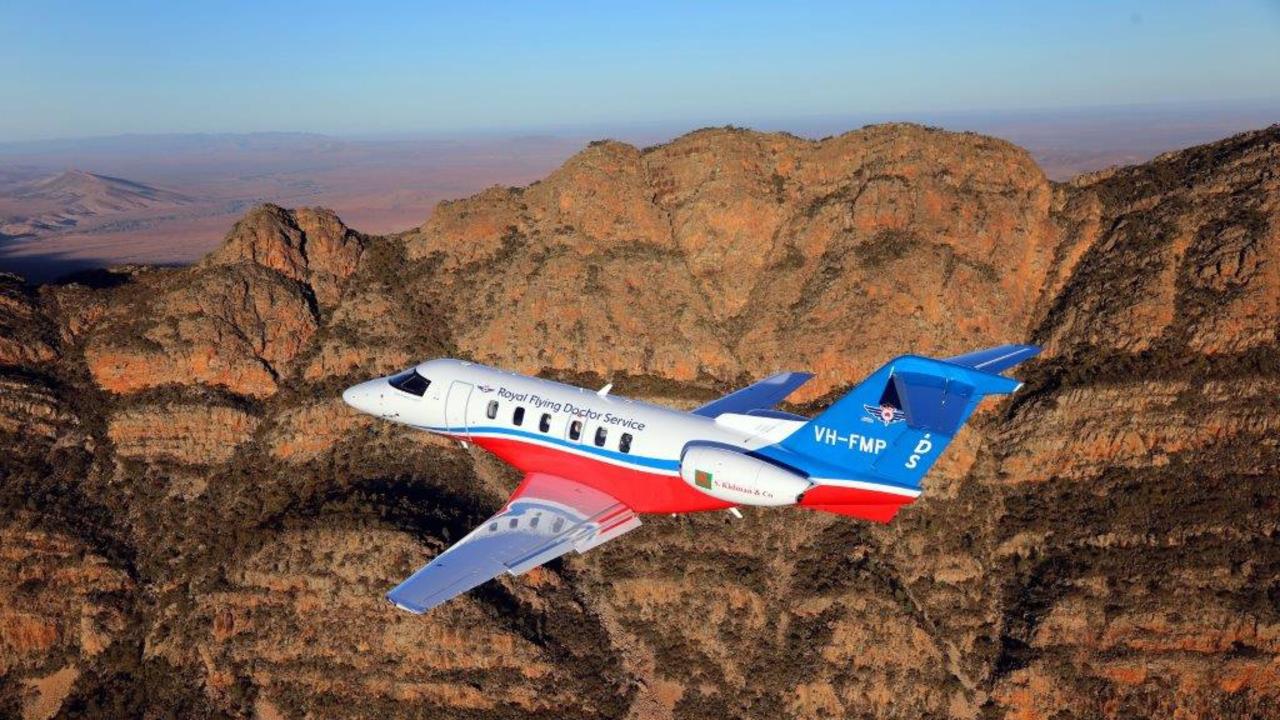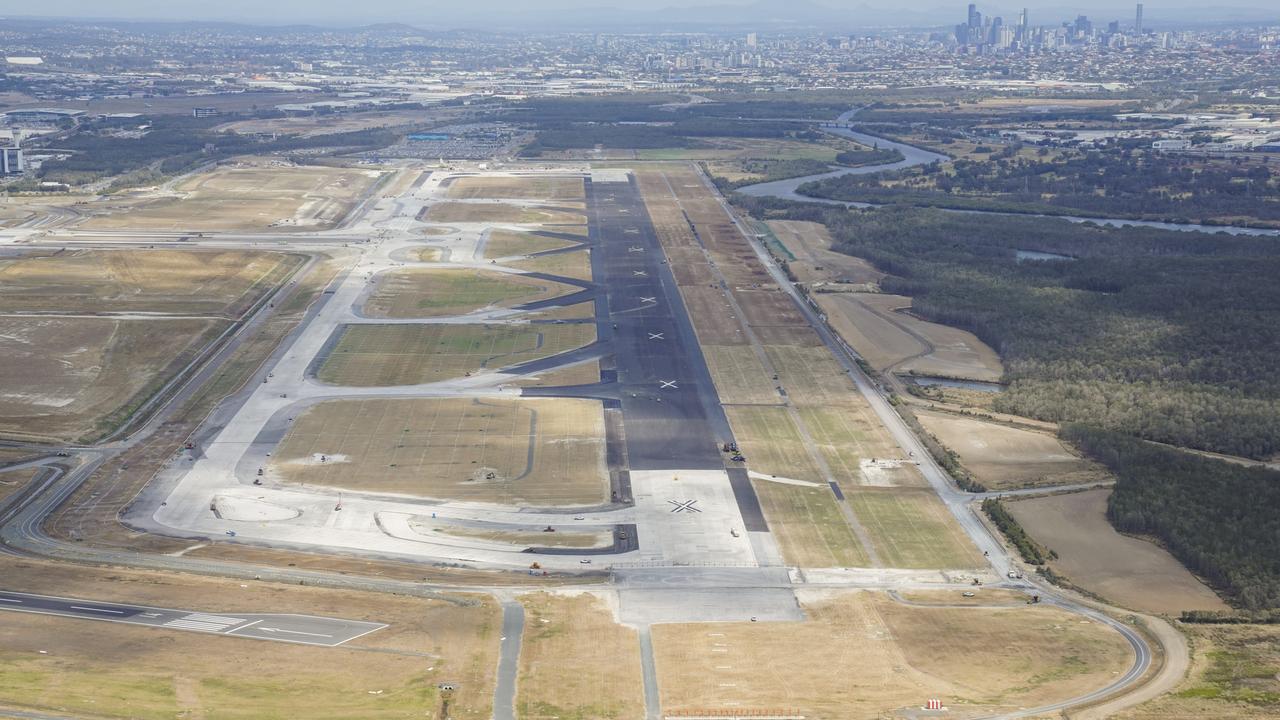Residential super-region emerges as new economic epicentre
ONCE complete, the CBD of a privately-developed city-within-a-city on the outskirts of Brisbane will be twice the size of the capital’s CBD, as it transitions to being the employment and economic epicentre of a new residential super-region.
Future QLD
Don't miss out on the headlines from Future QLD. Followed categories will be added to My News.
GREATER Springfield will become the employment and economic epicentre of a new residential super-region west of Brisbane.
New research released exclusively to The Courier-Mail shows that Springfield Central — the CBD of the privately-developed city-within-a-city — is positioned to be the work, study and services hub of a catchment of 350,000 people by 2036.
“We will be the economic engine for a much wider area,” Springfield City Group executive general manager Richard Eden said.
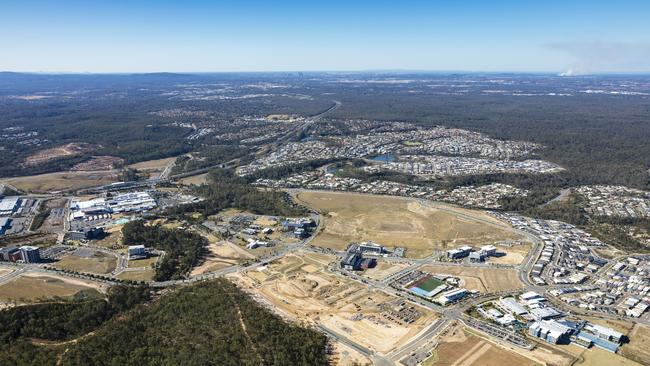
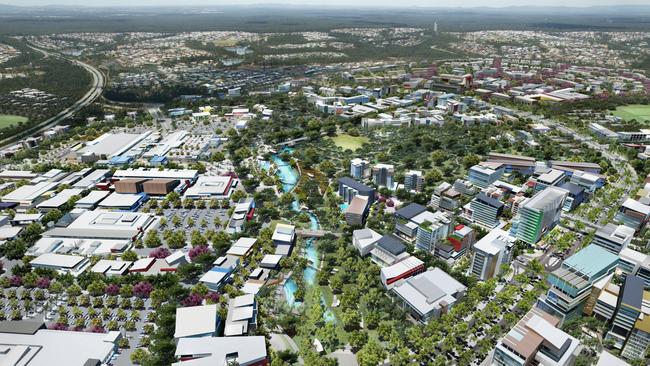
The analysis by urban growth consultants RPS Australia found Springfield will be closer and quicker to reach than Brisbane, Ipswich or Browns Plains for 21 of 24 existing and new suburbs.
They stretch along three corridors from Oxley in Brisbane’s west to Ripley Valley and south to Greenbank.
The area’s population of 94,000 is projected to hit 350,000 within two decades.
BOOMING POPULATION: HOW YOUR SUBURB WILL CHANGE
$5bn DEVELOPMENT: BUILD IT AND THEY WILL COME
WHAT SOUTH EAST QUEENSLAND WILL LOOK LIKE IN 2043
$70B PLAN TO CUT COMMUTE TIMES
“They will look towards us as the epicentre of that western corridor,” Dr Eden said. “We have to create 52,000 jobs.”
He admitted the research results were a bit of a surprise but said it fitted entirely with the vision of Springfield’s founders and owner, developers Maha Sinnathamby and Bob Sharpless, to create a self-sustaining city, not a dormitory community.
Once complete, Springfield Central’s 360ha heart will be twice the size of Brisbane’s CBD.
“You don’t get that in (communities like) North Lakes or Yarrabilba. It will be a huge contributor to the state’s economy,” Dr Eden said.
Springfield’s pivotal role in the fast-growing corridor would also save billions of dollars in infrastructure spending by relieving pressure from commuters who would otherwise drive into Brisbane, Ipswich or other centres to work, study or access services.
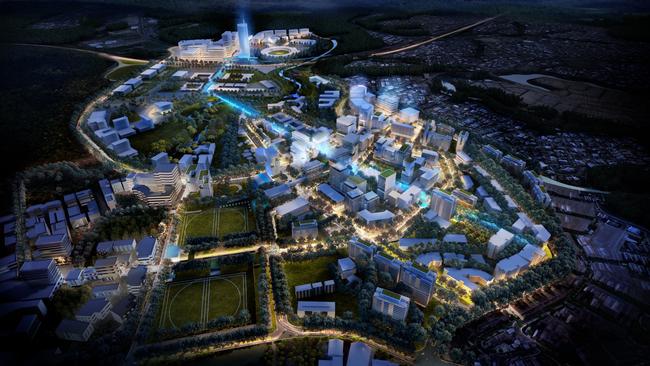
Greater Springfield’s current population of 40,000 is forecast to grow by 6 per cent per annum for the next 20 years — three times as fast as southeast Queensland overall.
And its population will be much younger, with nearly a third expected to be aged 19 or younger in 2036.
Suburban Alliance director Ross Elliott said Springfield was a great example of the vital role dispersed development and satellite hubs could play in relieving pressure from CBDs.
“It’s one of the most logical ways of moving forward. We’ve treated the master-planned communities as dormitories in the past,” he said.
But much more thought needs to be given to job creation in new developments as well as “retro-fitting’’ older areas such as Caboolture, Springwood, Chermside and Cleveland town centre.
A Grattan Institute report has highlighted that only one in eight Brisbane jobs is based in the CBD, with more than 30 per cent of new employment over the past five years created more than 20km from the city centre.

